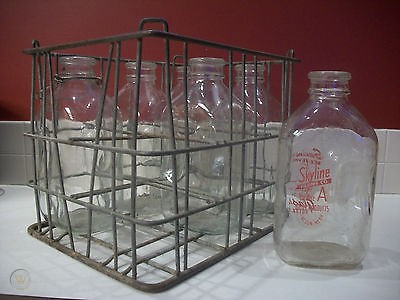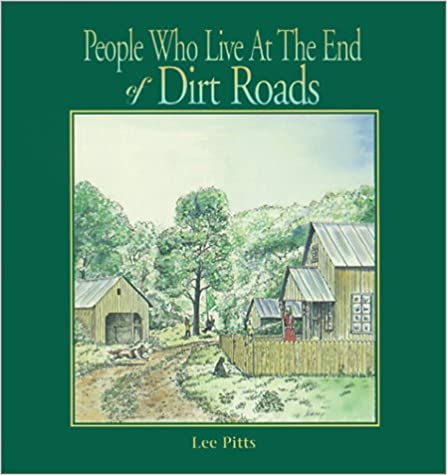Too Clever By Half
Too Clever By Half

 Earlier this month, CNN reported on how a large family in Texas is coping with the rising food prices. The report opened with the father, Larry Stotler, describing his family:
Earlier this month, CNN reported on how a large family in Texas is coping with the rising food prices. The report opened with the father, Larry Stotler, describing his family:
We have two biological kids and then my wife and I have a big heart for adoption, so we adopted a sibling group of two, then three, then one, and then we have a kid living with us right now who’s in a foster situation.
If you do the math, that’s two parents and nine children.
After Larry described his family, he and his wife Krista were shown inside a Kroger’s grocery store. The CNN reporter and camera followed them while Krista put groceries in her cart and commented on the rising food prices. At one point, she talked about how they buy 12 gallons of milk each week and how the cost of a gallon of milk has gone up from $1.99 to $2.79 per gallon.
After the story ran, there was a Twitterstorm of comments. Here are some of the comments that were made on Twitter by people who apparently do not have anything better to do:
● “Honestly, it should be a crime to buy 48 gallons of milk per month, please have a glass of water.” — Elizabeth Pancotti (@ENPancotti)
● “I love milk but come on. 12 gallons a week? Do they bathe in it?” — Brendan Carrett (@bad_takes)
● “12 gallons a week. Buy a ****ing dairy cow at that point. Would be cheaper.” — Eric Howell (@Eric_Howell)
The comment that suggested buying a cow triggered the memory of my dad teaching me how to milk the cow that he had purchased to supply our large family with milk.
During the years I was growing up, my parents owned an acre and a half of land that was located next to our house. My dad turned the land into a pasture by putting a fence around it and building a barn to provide shelter for the animals. For a short period of time we had horses, and during the late 1960s and early 1970s, we had several sheep and a cow.
Before Dad purchased the cow, he regularly stopped to pick up milk and other perishable items at Stafford’s Dairy while he was on his way home from work. The milk was sold in gallon-sized glass bottles and Dad always bought six bottles at a time, which he brought home in a steel wire crate that was provided by Stafford’s Dairy. The crate held up to six bottles at a time. We went through at least 12 gallons of milk a week, just like the family that was featured in the CNN story.
Dad decided that it would be more economical to have a cow that would produce all the milk that our family needed, so he purchased the cow. After he became proficient at milking the cow, he trained me so I could fill in for him on the evenings that he had to work late. At that time, I was 14 years old, and my parents had 14 children.
Here are some reasons why people would make fun of and mock a family for consuming what would appear to be an inordinate amount of milk: (1) they did not grow up in large families, so they have no knowledge or experience of what it takes to feed a large family; (2) they do not have children of their own, so they do not have any first-hand experience of what it takes to raise children; or (3) they only have one or two children (which is now considered to be the ideal family size), so they have limited experience with raising children.
The people who make snide comments about large families reveal their ignorance of what it takes to raise more than a couple of children. This type of ignorance is dangerous when those same people are in leadership positions and have the power to make policy decisions and pass laws that will have an adverse effect on our society.
According to recent data from the National Center for Health Statistics, marriage rates reached a record low in 2019 with 6.1 marriages per 1,000 people. Last month, the Pew Research Center reported that in 2019, “roughly four-in-ten adults” aged 25 to 54 were “neither married nor living with a partner.” Thirty years ago, roughly three-in-ten adults aged 25 to 54 were neither married nor living with a partner.
This is a very troubling trend. Thirty years ago, 70 percent of adults who were in their child-bearing years were married or living with a partner. Today, 60 percent of adults who are in their child-bearing years are married or living with a partner. There is no reason to believe that this trend will not continue, so it won’t be long until only 50 percent of adults who are in their child-bearing years will be married or living with a partner.
It’s only a matter of time that married people will be in the minority. To make matters worse, married couples are having fewer children than at any time during the history of our country. According to the Centers for Disease Control and Prevention (CDC), the number of babies who were born in the U.S. in 2020 dropped to an all-time low of only 56 births per 1,000 women aged 15 to 44.
The government started tracking birth rates in 1909 (112 years ago) when the birth rate was 126.8 births per 1000 women between the ages of 15 and 44. In 2013, the birth rate was 62.5 births per 1000 women between the ages of 15 and 44, which was less than half of what it was in 1909. Now it’s only 56 births per 1,000 women between the ages of 15 and 44.
We are at a point now in our country where we are not having enough new babies to replace the people who are dying. It is impossible for our economy to grow and flourish while our population of young people is declining.
Every new baby creates a ripple effect throughout our economy. The millions of babies who are not being born will never be available to create the hundreds of millions of dollars of economic activity from sales of formula, diapers, beds, toys, car seats, clothing, etc. Worse yet, those same babies will never be with us to grow up, enter into the workforce, and purchase houses, cars, appliances, furniture, and other consumer goods and services. And they won’t be around to pay taxes that would go toward supporting our government and our aging population.
But the loss of a person who was never born to our economy is insignificant compared to the loss of that person’s contribution to humanity and the loss of that person’s chance to experience salvation and eternal happiness with Almighty God in Heaven.
When I was growing up, there was a saying that was used to refer to people who were intelligent but lacked common sense — people who were too smart for their own good. The saying, which was “Too clever by half,” was coined by George J. Whyte-Melville in his 1858 book, ‘‘The Interpreter.’’
We are ruled by elites who are too clever by half. They run our institutions, media, public schools, global corporations, and local, state, and federal governments. Most of them don’t have any children of their own or have limited their families to only one or two children. They are the ones who laugh at, mock, and condemn families like the middle-class Texas family who buy 12 gallons of milk every week for their growing family. These elites are too ignorant to fully understand how much food a large family consumes, especially the teenagers, who probably go through several boxes of cereal every week.
Instead of honoring parents who are raising children who will contribute to our economy and support our elderly population (while making a positive contribution to our society and culture), these ignorant fools can only find it within themselves to mock and ridicule those parents.
What we are seeing is what happens when a nation abandons God. The economy falls apart, chaos ensues, the population becomes crueler and more jaded, and the godless elites exert their power over the masses while taking away their freedoms.
Lord have mercy on us.




9 Comments
My husband Dan and I just finished watching the funeral mass for Harry Williams for the second time. I really have no words to express our deepest sympathy for your beautiful and amazing family! Please know that we are praying for you, and will continue to keep you all in our daily prayers! I am sitting here crying as I’m writing to you. After reading “too clever by half”, it brought back some memories that I have not thought about in a long time. I used to walk to Schwab‘s dairy (on Western Ave, just down the hill from Schier’s Dairy) and bring home 6 – 1/2 gallon glass bottles of milk in a wire rack that had a handle on it. The dairy was approximately four blocks from our home in the south end of Peoria. I remember it was so heavy, that I would stop and put it down and change hands each block just to give relief in carrying the heavy 3 gallons of milk. I’m the 8th child in a family of 16 children, and this milk experience happened at least every other day, as we too went through 12 to 14 gallons of milk per week. Father David mentioned adoration.com in his beautiful homily, and I immediately went there after watching the most beautiful funeral Mass for Harry! I could go on, but just want you to know that I appreciate finding out about these special adoration newsletters, and plan to start reading a few every night!
May God bless and keep all of you close to His Sacred Heart.
Peace and all good,
Annie Plaag ❤️
I am the 8th of 9 children. Harry’s story took me back to when we also got milk in glass bottles. Ours came from Schier’s. My dad worked 6 days each week and Arthritis put mom in a wheelchair by the time I was about 8 so the sibling who was old enough to drive would be sent to the dairy, store, laundromat, etc. As I sit in the Adoration Chapel tonight with my husband, I thank God for the life and faith of Mr. Harry Williams. He shared Christianity in a way so few can or will. I am also heartbroken, perhaps selfish, because I feel the world needs the voice of Harry Williams and Mother Angelica now more than ever. But God in His wisdom and love is still God and He will continue to use both of these evangelizing angels from Heaven above.
1bezk8
z9lcqd
4ecli1
65sx56
75hkb5
j3y2q4
a664jp